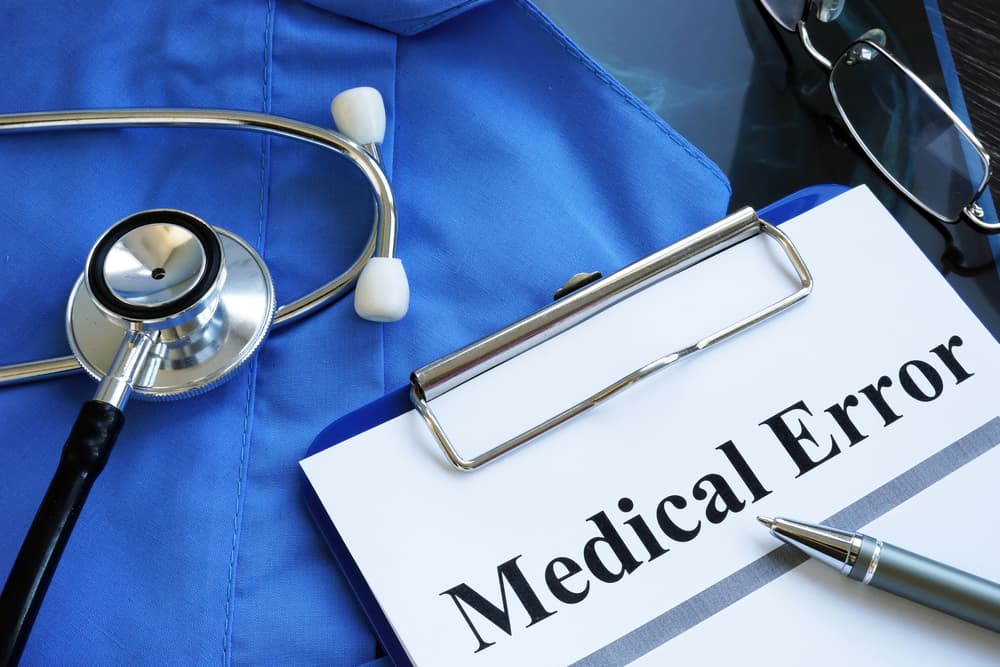A bond of trust exists between a patient and a doctor. When a medical error shatters that trust and leaves you injured, the feeling of betrayal is profound. You followed their advice, you underwent the procedure, and now you are in a worse position than when you started.
A bad medical outcome is not always grounds for a lawsuit, which leaves you wondering, do I have a case for medical malpractice? The answer is not found in your frustration or disappointment, but in a specific set of legal standards that must be met to hold a negligent healthcare provider accountable.
Schedule a Free Case Evaluation
Key takeaways of malpractice cases
- A negative medical result, on its own, does not automatically mean malpractice occurred. Medicine involves inherent risks, and a poor outcome is not always the result of a doctor’s error.
- To have a valid medical malpractice case, you must prove four specific elements: a doctor-patient relationship existed (duty), the doctor breached the standard of care (negligence), this breach directly caused your injury (causation), and you suffered significant harm (damages).
- The "standard of care" is the central issue in most malpractice cases. It is defined as the level of skill and care that a reasonably competent doctor in the same field would have provided under similar circumstances.
- In New York, your case must be reviewed by a qualified medical professional who agrees that negligence likely occurred before your attorney can even file a lawsuit.
The Critical Difference: A Bad Outcome vs. Medical Negligence
The first step in evaluating your situation is to distinguish between an unfortunate but known risk of a procedure and an actual act of medical negligence. This distinction is the foundation upon which every malpractice claim is built.
The accepted risks of medical treatment

Every medical procedure, from taking a new medication to undergoing complex surgery, carries a degree of risk. Doctors are required to inform you of these known risks so you can provide "informed consent."
If a known complication occurs and the doctor did everything correctly, it is generally not considered malpractice. The law does not expect doctors to be perfect or to guarantee a specific outcome.
When a mistake crosses the line into malpractice
Medical malpractice occurs when a healthcare provider injures a patient through a negligent act or omission. Negligence, in this context, means the provider’s care deviated from the accepted standard of care.
It is about a preventable error that a competent professional in the same situation would not have made. A bad outcome becomes potential malpractice when it is the result of a failure to uphold this professional duty.
The Four Legal Elements of a Medical Malpractice Case
To move forward with a claim, your medical malpractice attorney must be able to prove four specific elements. If any one of these elements is missing, you do not have a viable case, no matter how significant your injury.
Element 1: A doctor-patient relationship (duty of care)
This is the first and usually the easiest element to establish. You must show that you had a formal doctor-patient relationship with the healthcare provider you are suing. This relationship creates a legal "duty of care." If you were under a doctor’s care and they were treating you for a medical condition, this duty existed.
Element 2: A breach of the standard of care (negligence)
This is the heart of a medical malpractice claim and the most difficult element to prove. You must demonstrate that the doctor, nurse, or hospital failed to provide care that met the accepted medical standard of care.
This standard is not based on your opinion or what you read online. It is established by what other reasonably prudent medical professionals would have done in the same situation.
The standard of care can be breached in countless ways, often through a failure to act or a failure to diagnose correctly.
Some common examples of these breaches include:
- Misinterpreting lab results or diagnostic images like X-rays or CT scans.
- Failing to order necessary tests that would have led to a timely diagnosis.
- Performing surgery on the wrong body part or leaving a surgical instrument inside a patient.
- Discharging a patient from the hospital prematurely.
- Prescribing the wrong medication or the incorrect dosage.
Each of these examples represents a clear deviation from the competent care a patient has a right to expect. Proving this breach requires testimony from another medical professional in the same field.
Element 3: Causation (The direct link between negligence and injury)
Next, you must prove that the doctor’s breach of the standard of care was the direct cause of your new or worsened injury. This is known as causation. It is not enough to show that the doctor made a mistake; you must prove that the mistake is the reason you were harmed.
For example, if a doctor failed to diagnose a patient's cancer (the breach), the patient must then show that this delay in diagnosis allowed the cancer to spread and become untreatable (the causation). If the cancer was already untreatable even with a timely diagnosis, the causation element might be missing.
Element 4: Significant damages (real, measurable harm)
Finally, you must demonstrate that you suffered significant harm, or "damages," as a result of the injury caused by the negligence. A minor doctor’s error that caused no real or lasting harm is not grounds for a lawsuit.
The legal system requires that the harm be substantial enough to warrant a legal action, a principle that aligns with the focus on serious injury cases.
These damages represent the tangible and intangible losses you have suffered due to the medical error.
A claim for damages typically includes compensation for:
- Additional medical bills needed to correct the error or manage the new condition.
- Lost wages and income from being unable to work.
- Loss of future earning capacity if you are left with a permanent disability.
- Physical pain and suffering, both past and future.
- Emotional distress and mental anguish caused by the injury.
A successful claim fights for compensation to cover all of these documented losses. An attorney works with economic and medical professionals to calculate the full value of these damages.
Schedule a Free Case Evaluation
Common Examples of Medical Malpractice in New York
While negligence can occur in any medical setting, certain types of errors are more common than others.
Misdiagnosis or delayed diagnosis
A doctor’s failure to correctly diagnose a serious condition like cancer, heart disease, or stroke in a timely manner can have catastrophic consequences. This often happens when a doctor dismisses a patient’s symptoms, fails to order the right tests, or misreads test results.
Surgical errors and anesthesia mistakes

Errors in the operating room are some of the most devastating. These include performing the wrong procedure, operating on the wrong site, leaving a foreign object like a sponge or clamp inside the body, or causing nerve damage.
Anesthesia errors, such as administering too much or too little medication, can lead to brain damage or death. Medical errors are a shockingly common cause of death in the U.S., with some research from Johns Hopkins suggesting they are the third-leading cause of death.
Birth injuries
Negligence during labor and delivery can cause lifelong injuries to a child, such as cerebral palsy or Erb's palsy. These errors can include a failure to monitor the baby for signs of distress, improper use of forceps or vacuum extractors, or a delay in ordering a necessary C-section.
Medication and prescription errors
A doctor prescribing the wrong medication, a nurse administering the wrong dose, or a pharmacist filling a prescription incorrectly can all cause severe harm or fatal reactions.
The Mandatory Role of a Medical Professional in Your Case
You cannot file a medical malpractice lawsuit in New York based on your own belief that a doctor was negligent. The state has a specific legal requirement to prevent frivolous claims. Your attorney must first have your entire case reviewed by a qualified medical professional.
According to New York Civil Practice Law & Rules § 3012-a, your lawyer must file a "Certificate of Merit" along with your lawsuit. This certificate is a formal declaration that your attorney has consulted with a licensed physician who is knowledgeable about the relevant medical issues.
Based on that consultation, the attorney confirms that there is a reasonable basis to proceed with the lawsuit. This step is non-negotiable and ensures that your case has a solid medical foundation before it ever enters a courtroom.
FAQ for Do I Have a Case for Medical Malpractice?
What if I signed a consent form before my procedure?
Signing a consent form does not give a doctor permission to be negligent. A consent form acknowledges that you understand the known and accepted risks of a procedure. It does not protect a doctor from liability if they make a preventable error that falls below the standard of care.
How long do I have to file a malpractice lawsuit in New York?
The deadline, known as the statute of limitations, is very strict. For most medical malpractice cases in New York, you have two years and six months from the date of the negligent act or from the end of a continuous course of treatment. Because there are some exceptions, you must speak with an attorney as soon as you suspect a problem.
Who can be held liable in a malpractice case?
It is not just doctors. Any licensed healthcare provider or entity can be held liable for negligence. This includes surgeons, nurses, anesthesiologists, dentists, pharmacists, hospitals, and clinics.
Can an AI tool tell me if I have a medical malpractice case?
Do not rely on AI chat tools for legal advice. AI tools can provide general information, but they do not understand the specific details of your medical records or the complex requirements of New York malpractice law.
Relying on them for legal advice may lead to costly errors. Always consult a qualified attorney for guidance on your situation.
Finding Clarity and Seeking Accountability

Determining whether you have a viable medical malpractice case is a complex and demanding process. It requires a deep dive into medical records, consultation with medical professionals, and a thorough understanding of the law.
You do not have to find these answers on your own. The first step is to seek a professional evaluation of your situation to find clarity and learn your options for holding the responsible party accountable.
The attorneys at Queller Fisher have dedicated more than 60 years to fighting for victims of medical negligence. We are a selective, low-volume firm that focuses on serious injury cases, allowing us to dedicate our full resources and attention to each client.
Our track record of success is why other law firms across New York refer their most complex and significant malpractice cases to us.
We are available 24/7 for a free, confidential consultation to discuss your case. If your injury prevents you from coming to our office, we will come to you.
Schedule a Free Case Evaluation
New York City Office: (212) 406-1700
Bronx Office: (718) 892-0400